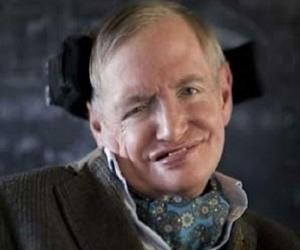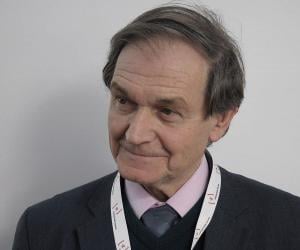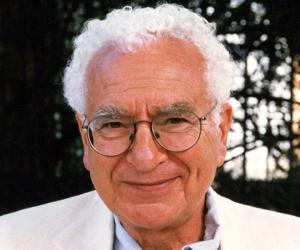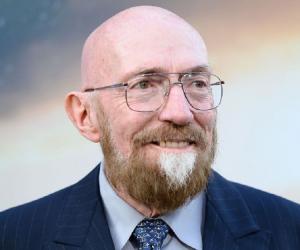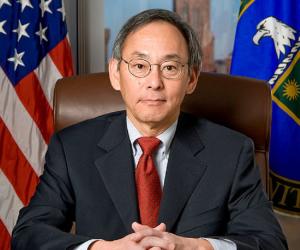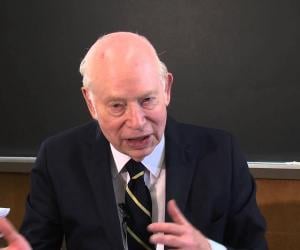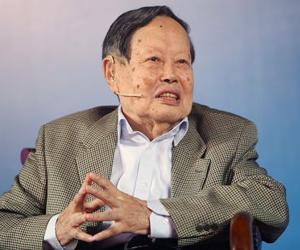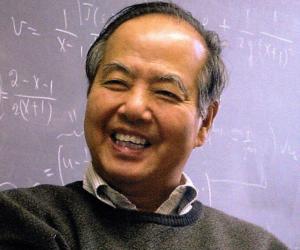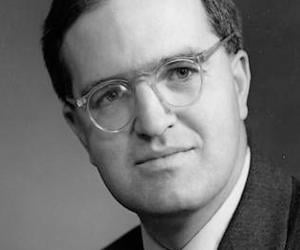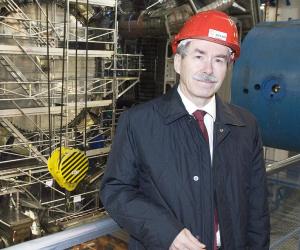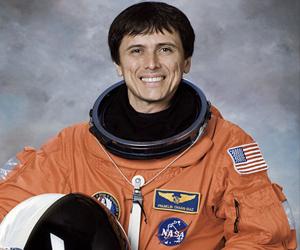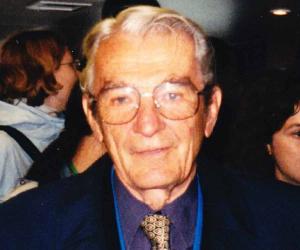Stephen Hawking was an English theoretical physicist and cosmologist, who despite being afflicted motor neurone disease that severely limited his physical abilities, was able to build a phenomenally successful career. He was the first to set out a theory of cosmology explained by a union of the general theory of relativity and quantum mechanics. Hawking was ranked 25 in the BBC's poll of the 100 Greatest Britons, in 2002.
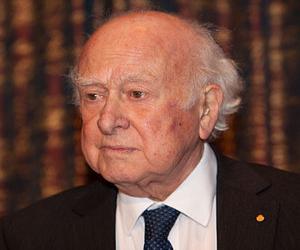
Peter Higgs is a British theoretical physicist. He studied at King's College London and was awarded a Ph.D. in 1954. He went on to have a brilliant academic career and was elected Fellow of the Royal Society (FRS) in 1983. In 2013, he shared the Nobel Prize in Physics with Belgian physicist François Englert.
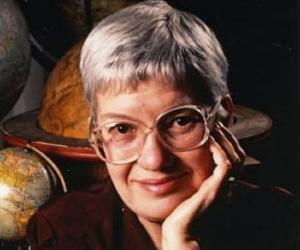
American astronomer Vera Rubin is best known for her pioneering discoveries on galaxy rotation rates, her groundbreaking work confirming the existence of dark matter and for her life-long advocacy for women in science. She studied the galactic rotation curves and provided strong evidence of the existence of dark matter. The Vera C. Rubin Observatory in Chile is named after her.
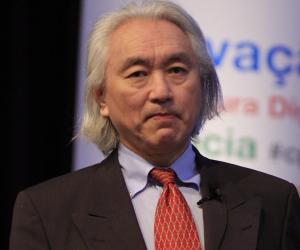
Apart from teaching at the City College of New York, theoretical physicist Michio Kaku also often pens his thoughts in blogs and has written several bestselling books, such as The God Equation. His research is focused on the string theory. He also believes in the existence of aliens.
Roger Penrose’s contribution to the research related to the black hole and general relativity earned him the Nobel Prize in Physics in 2020. The Emeritus Rouse Ball Professor of Mathematics at Oxford, Roger is also a fellow of Wadham College, St John's College of Cambridge, and University College London.
Nobel Prize-winning American physicist Murray Gell-Mann is best remembered for his research on elementary particles. The Yale and MIT alumnus later taught at Caltech and is credited with coining the terms "quark" and "strangeness" in quantum physics. A linguistic enthusiast, he also co-established the Evolution of Human Languages program.
American theoretical-physicist Kip Thorne, who is noted for his contributions in gravitational physics and astrophysics, is known for Thorne-Żytkow object, Thorne-Hawking-Preskill bet, LIGO, gravitational waves and the book Gravitation. Thorne along with Rainer Weiss and Barry C. Barish received the Nobel Prize in Physics in 2017 for their contributions to the LIGO detector and the observation of gravitational waves.
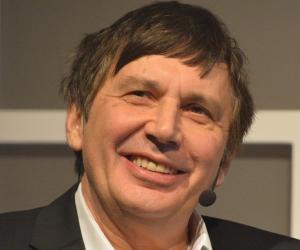
Andre Geim is a Russian-born Dutch-British physicist. He has been associated with the School of Physics and Astronomy at the University of Manchester for several years. In 2010, he was awarded the Nobel Prize in Physics jointly with Konstantin Novoselov in recognition of his work on graphene. He is also a recipient of the 2000 Ig Nobel Prize in Physics.
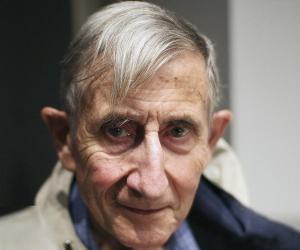
Freeman Dyson was a British-American theoretical and mathematical physicist, mathematician, and statistician. He made major contributions in the fields of quantum field theory, astrophysics, random matrices, quantum mechanics, and nuclear physics. He originated the concept that went on to be known as Dyson's transform. He received the Golden Plate Award of the American Academy of Achievement in 1986.
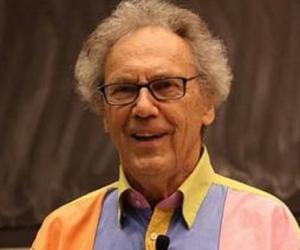
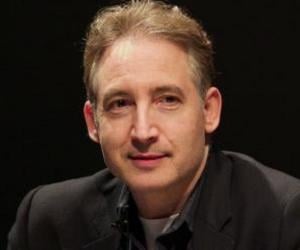
American theoretical physicist, mathematician, and string theorist Brian Greene is noted for popularising string theory through his books like The Elegant Universe, and The Fabric of the Cosmos and related PBS television specials. Greene taught as professor of physics at Cornell University, and presently serves as a professor at Columbia University. He is the co-founder and chairman of the World Science Festival.
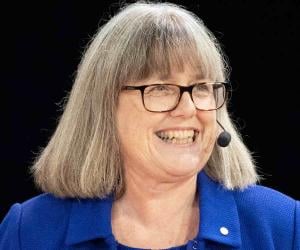
Donna Strickland is a Canadian optical physicist who is considered a pioneer in the field of pulsed lasers. In recognition of her research on the practical implementation of chirped pulse amplification, she was jointly awarded the Nobel Prize in Physics in 2018, together with Gérard Mourou. She is currently a professor at the University of Waterloo in Ontario, Canada.
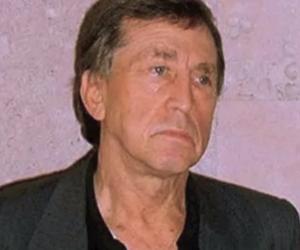
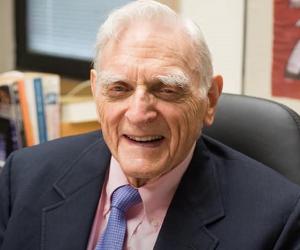
John B. Goodenough is an American solid-state physicist and materials scientist. He is credited with developing the lithium-ion battery. In 2019, he became the oldest person to receive a Nobel Prize when he was honored with the prestigious award for his work on lithium-ion batteries. He is also a recipient of the Copley Medal and the National Medal of Science.
American physicist, politician and Nobel laureate Steven Chu, who served as United States Secretary of Energy, presently serves as Professor of Physics and Professor of Molecular and Cellular Physiology at Stanford University. His research on cooling and trapping of atoms with laser light led him to share the 1997 Nobel Prize in Physics with William Daniel Phillips and Claude Cohen-Tannoudji.
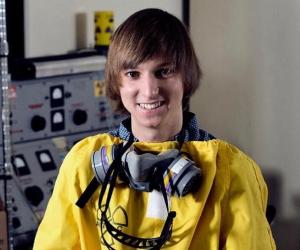
Taylor Wilson is an American nuclear physics enthusiast who is the youngest person ever to produce nuclear fusion using a fusor. He achieved this feat in 2008, at the age of 14.
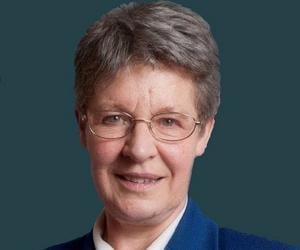
Jocelyn Bell Burnell is an astrophysicist from Northern Ireland. As a postgraduate student, she discovered the first radio pulsars. She graduated from the University of Glasgow and pursued an academic career. In 2018, she received the Special Breakthrough Prize in Fundamental Physics for her discovery of radio pulsars. She donated the three million dollars she received as prize money.
Nuclear physicist and Nobel laureate Steven Weinberg is known for establishing the electroweak theory, along with Sheldon Lee Glashow and Abdus Salam. He was born to Jewish immigrants in New York and made it to Cornell and Princeton. He is an atheist and supports the Israeli cause.
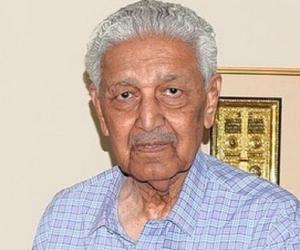
Pakistani engineer Abdul Qadeer Khan was a major figure in the development of his country’s nuclear plans. His research also focused on uranium enrichment. He was later apparently involved in transfer of nuclear technology to Iran, among other countries, but was pardoned by then-president Pervez Musharraf.
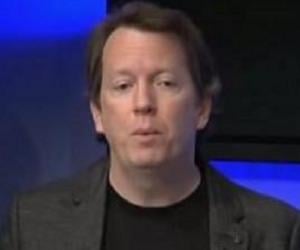
Theoretical physicist Sean M. Carroll is a renowned Caltech professor who considers himself an old-school theorist and often maps his research using pencil and paper. Interested in field theory, gravitation, and cosmology, he blogs often, had written popular books, and has also appeared on shows such as The Universe.
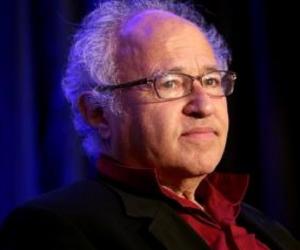
Eminent scholar David D. Friedman has excelled in a wide range of academic areas, including economics, physics, law, and business. The Harvard alumnus is best known for his anarcho-capitalist theories and the book The Machinery of Freedom but has penned countless other books, too, including two science-fiction fantasy novels.
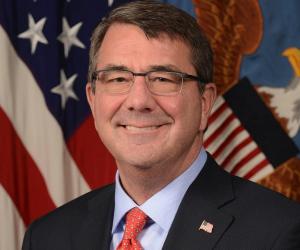
Yale and Oxford alumnus Ashton Carter had interestingly bagged his first job at a car wash at 11. He grew up to teach at Harvard and Stanford and also served as the U.S. Secretary of Defense under Barack Obama. The physicist now heads the Belfer Center for Science at Harvard.
Chen Ning Yang is a Chinese theoretical physicist known for his significant contributions to statistical mechanics, gauge theory, integrable systems, and both particle physics and condensed matter physics. He and Tsung-Dao Lee were awarded the 1957 Nobel Prize in Physics for their work on parity nonconservation of weak interaction. The men also elucidated the Lee-Yang circle theorem.
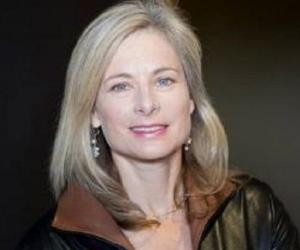
Apart from teaching at Harvard, theoretical physicist Lisa Randall has also held professorships at MIT and Princeton. She has also written several popular books, such as Warped Passages and Knocking on Heaven’s Door. One of Time’s 100 Most Influential People of 2007, she has also written a libretto for an opera.
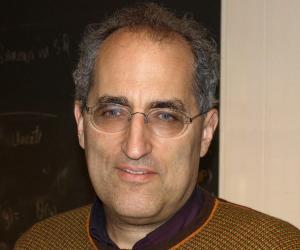
American mathematical and theoretical physicist Edward Witten is regarded as the practical founder of M-theory. His proof of positive energy theorem led him to become the first physicist who received the Fields Medal by International Mathematical Union. His research works mainly include the areas of string theory, supersymmetric quantum field theories and quantum gravity, besides other areas of mathematical physics.
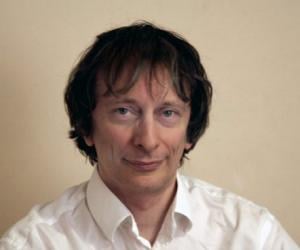
David Deutsch is a British physicist, currently serving as a visiting professor at the University of Oxford. He is a pioneer in the field of quantum computation and gave a description for a quantum Turing machine. He is a proponent of the many-worlds interpretation of quantum mechanics. He received the Dirac Prize of the Institute of Physics in 1998.
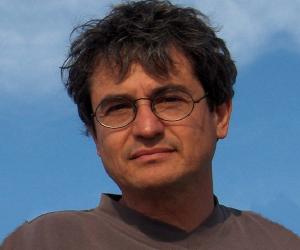
Carlo Rovelli is an Italian theoretical physicist and writer. He is active mainly in the field of quantum gravity and is a founder of loop quantum gravity theory. He also has experience working in the history and philosophy of science. His popular science book, Seven Brief Lessons on Physics, has sold over a million copies worldwide.
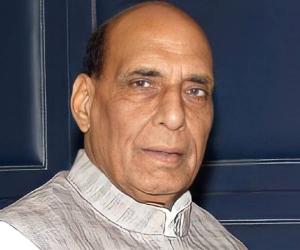
The current Indian defense minister Rajnath Singh has previously held other important portfolios, such as home affairs and agriculture. He has also been a BJP president and the chief minister of Uttar Pradesh. Born into a farmer’s family, he worked as a physics lecturer before he joined the RSS.
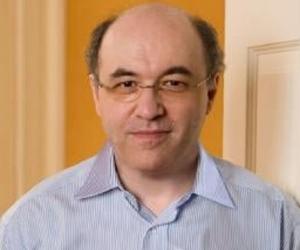
Stephen Wolfram is a British-American computer scientist, physicist, and businessman, best known for his work in computer science, mathematics, and theoretical physics. He is a fellow of the American Mathematical Society. As a businessman, he is the founder and CEO of Wolfram Research, a software company.
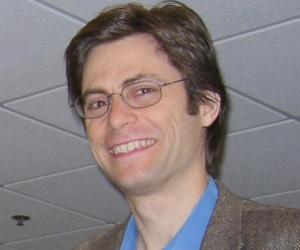
Born to math professor Harold S. Shapiro, Max Tegmark grew up to co-establish the Future of Life Institute, with funding from Elon Musk. The MIT professor is a specialist in cosmology, physics, and machine learning and had also penned a book on artificial intelligence, titled Life 3.0.
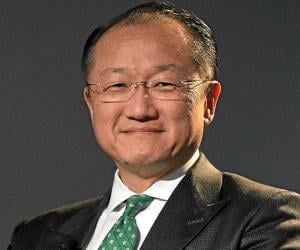
Jim Yong Kim, or Kim Yong, was born in South Korea and later moved to the US, where he grew up to be the president of the World Bank. The physician and anthropologist has also taught at Harvard Medical School, his alma, and co-owns the medical care company Partners in Health.
Tsung-Dao Lee is a Chinese-American physicist renowned for his work on particle physics, parity violation, soliton stars, nontopological solitons, and the Lee Model. In 1957, he became the third-youngest person to be awarded the prestigious Nobel Prize in the science fields; he won the Nobel Prize in Physics. He is also the first Chinese Nobel laureate.
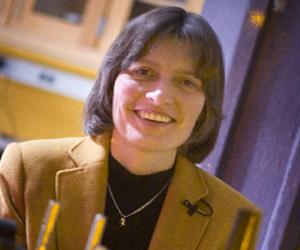
Lene Hau is a Danish physicist and educator currently serving as the Mallinckrodt Professor of Physics and Applied Physics at Harvard University. She has done major research into novel interactions between ultracold atoms and nanoscopic-scale systems. She also often speaks at international conferences. She is a recipient of the George Ledlie Prize and the Richtmyer Memorial Award.
Nobel Prize-winning Danish nuclear physicist Aage Bohr is best remembered for his work related to the geometry of atomic nuclei. Son of Nobel laureate physicist Niels Bohr, Aage had started his career as an assistant to his father and working on the development of the atomic bomb.
Gerard ’t Hooft is a Dutch theoretical physicist whose work focuses on black holes, gauge theory, quantum gravity, and quantum mechanics. In 1999, he shared the prestigious Nobel Prize in Physics with Martinus J. G. Veltman. Over the years, Gerard ’t Hooft has also received other prestigious awards, such as the Wolf Prize, Lorentz Medal, Spinoza Prize, and Franklin Medal.
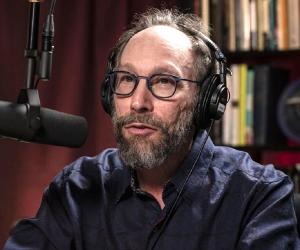
American-Canadian theoretical physicist Lawrence M. Krauss has taught at institutes such as ASU and Yale and also penned several bestselling books. Known for his research on dark energy and zero-energy states, he was later accused of sexual misconduct and thus lost the directorship of the ASU’s Origins Project.
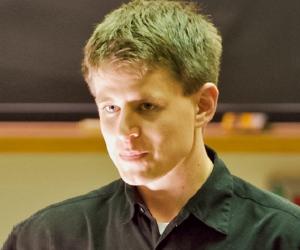
Randall Munroe quit his career as a NASA roboticist to re-live his childhood obsession with comics by creating the award-winning webcomic xkcd. He also writes a science blog and has penned New York Times bestsellers such as What If? and Thing Explainer. His other interests include kite photography.
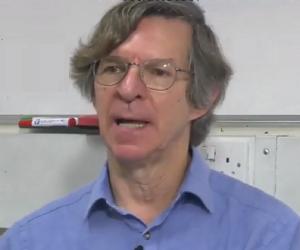
New York University physics professor Alan Sokal made headlines for creating what is now known as the Sokal Hoax. He wrote gibberish using flowery jargon and submitted it to the journal Social Text, which published it as postmodernist criticism, thus proving the lack of credibility of such journals.
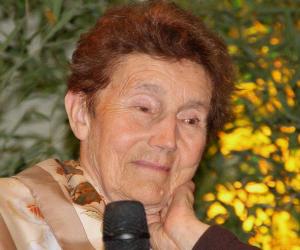
French nuclear-physicist Hélène Langevin-Joliot comes from the distinguished Curie family, which includes five Nobel Laureates, including her maternal-grandparents Marie and Pierre Curie, her parents Irène and Frédéric Joliot-Curie, and her maternal uncle-in-law Henry Labouisse. Hélène serves as a director of research at CNRS and as professor of nuclear physics at the Institute of Nuclear Physics at the University of Paris.
Franklin Chang Díaz is a Costa Rican American physicist, mechanical engineer, and former NASA astronaut. He is credited with founding the Ad Astra Rocket Company where he currently serves as the CEO. On May 5, 2012, Franklin Chang Díaz was inducted into the NASA Astronaut Hall of Fame.
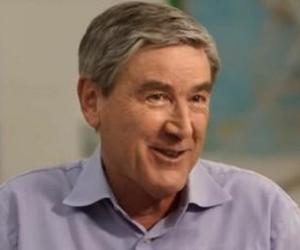
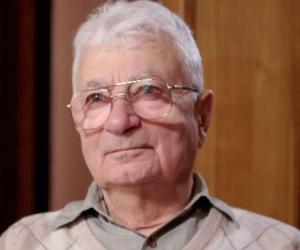
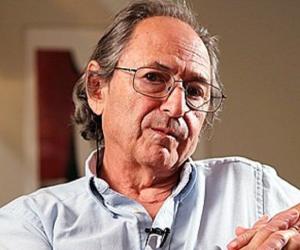
Michael Levitt is a biophysicist who has been serving as a Stanford University professor of structural biology since 1987. Along with Arieh Warshel and Martin Karplus, Levitt received the Nobel Prize in Chemistry in 2013. He has also received several other awards, including the DeLano Award for Computational Biosciences and was inducted into the National Academy of Sciences in 2002.
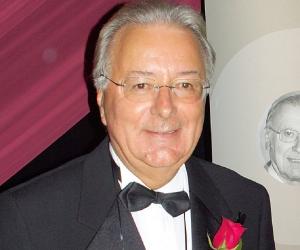
Federico Faggin is an Italian-American engineer, physicist, inventor, and entrepreneur. He designed the first commercial microprocessor, the Intel 4004. He is also the creator of the self-aligned MOS (metal–oxide–semiconductor) silicon-gate technology (SGT). As an entrepreneur, he co-founded Zilog, a company dedicated to microprocessors. He is the recipient of the 2009 National Medal of Technology and Innovation.
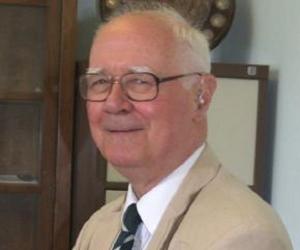
Templeton Prize-winning English theoretical physicist and priest John Polkinghorne championed the relationship between science and religion. He served as Professor of Mathematical Physics at the University of Cambridge before becoming an ordained Anglican priest and later served as president of Queens' College, Cambridge. He penned books like Exploring Reality: The Intertwining of Science and Religion and Questions of Truth.
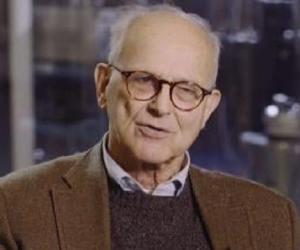
Born to a doctor and psychoanalyst father and an actor mother in Berlin, physicist Rainer Weiss fled to the US along with his family, to avoid the Nazi terror. Associated with institutes such as MIT and Princeton, he invented the laser interferometric technique used in LIGO and even won a Nobel Prize later.

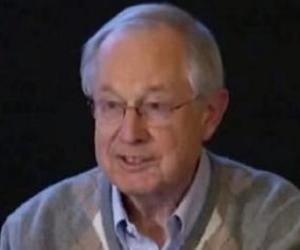
Ivar Giaever is a Norwegian-American physicist and engineer whose discovery of the tunnelling phenomena in solids earned him the prestigious Nobel Prize in Physics in 1973. Over the course of his illustrious career, Ivar Giaever has also received several other awards, such as the Oliver E. Buckley Prize, Golden Plate Award, and Zworykin Award.
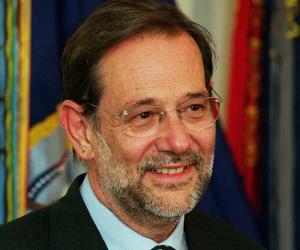
Javier Solana is a Spanish physicist and politician. He is best known for his service as the Minister of Foreign Affairs of Spain from 16 June 1992 to 18 December 1995. Over the course of his career, Javier Solana has been honored with many prestigious awards, such as the Charlemagne Prize, Vision for Europe Award, and Charles V European Award.
